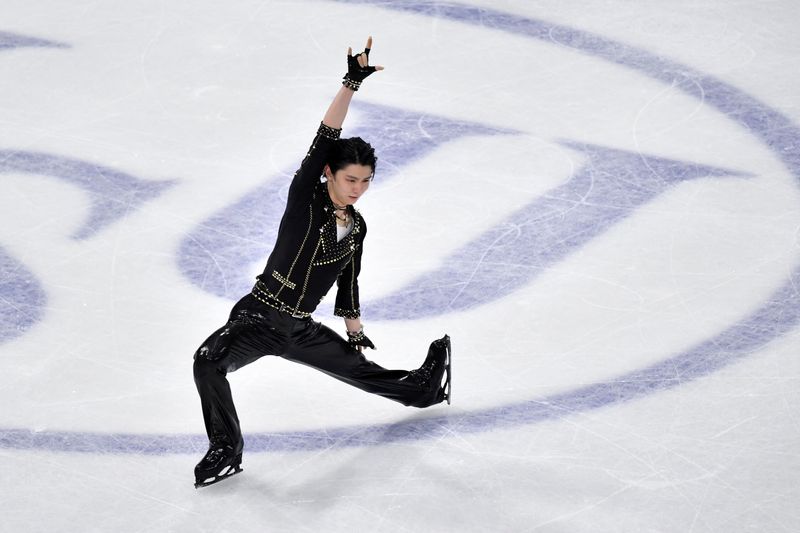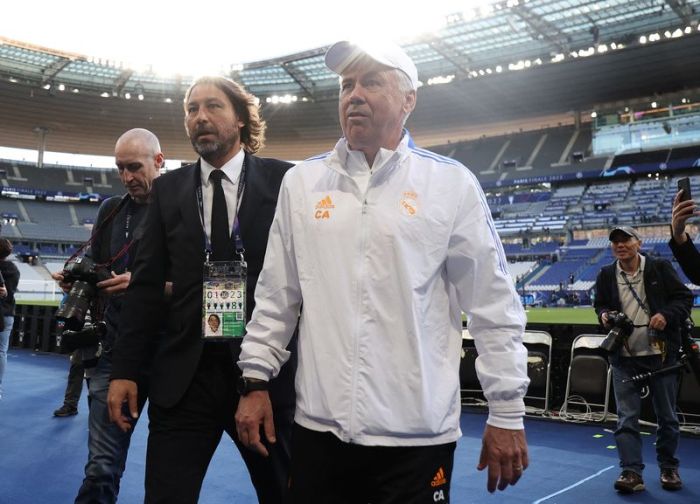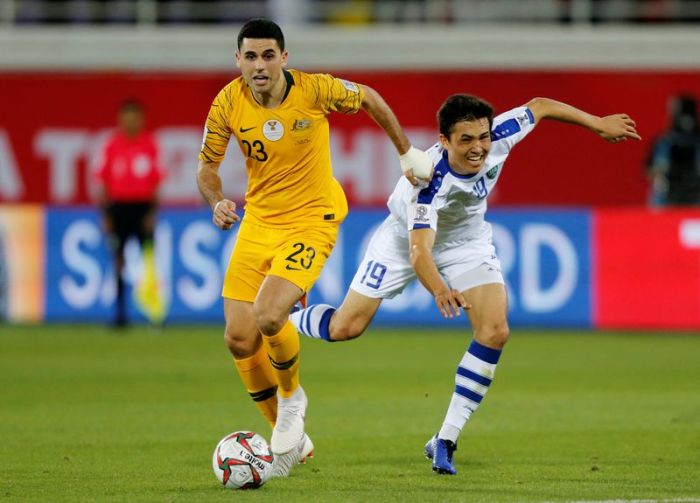BEIJING (Reuters) – Ever since Canadian Kurt Browning landed the first quadruple toeloop in 1988, the four-revolution jump has proliferated in the world of competitive figure skating.
Not the Axel.
The technique that twice Olympic champion Yuzuru Hanyu’s mentor called the “king of jumps” has been frozen at a triple for 44 years and, at least for the Japanese gold medal contender at the Beijing Games, remains the final frontier to conquer before he considers hanging up his skates.
So why is the Axel so difficult?
Of the six types of figure skating jumps, the Axel – named after Norwegian Axel Paulsen who invented it in the late 19th century – is the only one in which skaters take off facing forward. That means they must rotate an extra half-revolution – 4-1/2 times – for a jump to qualify as a quadruple Axel, or “4A”.
The forward-facing nature of the jump also makes timing especially tricky, biomechanics experts say. There are any number of angles at which to launch upwards and finding that sweet spot – balancing speed and precision – is no easy task.
“That spot isn’t going to be the same as your triple Axel,” said Chiba University researcher Nobuhiko Yoshioka, a decades-long biomechanics expert and international figure skating judge.
“You need more speed for the height and revolutions but the faster you go, the more precise you have to be. Things can go very wrong outside that narrow window.”
To spin that many times in barely three blinks of an eye, skaters must squeeze themselves into as tight a position as possible and hold it all the way until they land, said Deborah King, another biomechanics expert, at Ithaca College.
Another factor has nothing to do with physics: it’s simply frightening, Yoshioka said.
“You’re facing into the jump rather than backing into it. Maybe a good analogy is it’s less scary falling off a cliff backwards than forwards. A lot of skaters are not fans of the Axel for that reason,” he said.
FANS WOWED
At the U.S. Championships last month, Russian-born Artur Dmitriev wowed fans by merely attempting the quad Axel, which saw him land on both feet and the touch of a hand.
A few weeks earlier, Hanyu also included the 4A in his All Japan Championships free skate programme but landed two-footed and under-rotated.
At a practice session in Beijing on Wednesday, Swedish competitor Nikolaj Majorov called Hanyu the “god of the triple Axel” and said if anyone could nail the 4A, it might be him.
“Some people really struggle with Axels,” Majorov told Reuters. “He (Hanyu) goes with the flow. There is nothing in his head. He just goes and does it.
“Of course, one day I will try it, probably. But not before a competition.”
Ithaca College’s King said Hanyu’s quad-Axel attempt was the closest she had seen anyone come to landing the elusive jump.
“He was in quick and tight all the way through; it looked like he knew what he was doing,” she said.
“Having seen that, I would say there’s no reason he couldn’t land one. It looked really close to me.”
Hanyu, who has said he would include the quad Axel in his Olympic programme, competes on Feb. 8 and 10.
(Reporting by Chang-Ran Kim; Additional reporting by Gabrielle Tétrault-Farber; Editing by Ken Ferris)



















